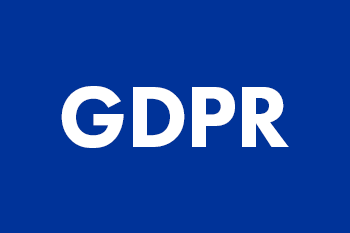7 Key Digital Marketing Trends in Africa Today
Marketing today has changed significantly from what we saw perhaps a decade ago. For any organsiation doing business in Africa, keeping an eye on digital marketing trends in Africa is certainly invaluable. With the introduction of digital marketing, we’ve seen a huge shift in the way that organisations engage with their customers. No longer is it necessary to communicate one message to all customers on a traditional channel like television or newspaper. Digital transformation in general is a great example of the requirement of management and executives to regularly attend executive short courses. This is not a luxury but an absolute necessity if you want to remain relevant to the customers that you serve.
With digital marketing today we have the opportunity to target those customers or clients on a one to one basis especially is we already have relationships with them. Understanding what the digital marketing trends in Africa are is certainly helpful when looking to engage with customers more effectively. No longer is it necessary to wonder whether your campaigns are working. And where to spend our marketing budgets. With real-time data and analytics today, we know exactly what’s working and what is not. The result is that we can constantly amend campaigns or product offerings to ensure better results.
In Africa specifically we know that mobile phones lead the way in how brands engage with customers. The statistics in mobile phone adoption across the continent is certainly awe inspiring.
Digital Marketing Trends in Africa – 10 PREDICTIONS FOR 2025
According to GISMA, this is how the Sub-Saharan mobile ecosystem is set to evolve.
- By 2025 mobile broadband will account for 87 percent of mobile connections. The current figure for these services is 38 percent.
- 3G will account for 60 percent of all mobile connections by 2025.
- Nearly 300 million new subscribers are expected to access the mobile internet in the next seven years.
- Active SIM connections are predicted to hit one billion in 2025, up from 747 million today.
- Subscriber numbers are expected to account for half the population in 2023, rising to 52 percent in 2025. Smartphone adoption is expected to nearly double in the region. Image: GSMA Intelligence
- By 2025 it’s anticipated that 634 million people in the region will be mobile subscribers, up from 44 percent and 444 million people in 2017.
- After witnessing aggressive subscriber growth in recent years, the adoption curve will slow to “half the level recorded over the preceding five years”, the report notes.
- However, at a CAGR of 4.8 percent for the period 2017-2022, the regional subscribe base will still be “more than double the global growth rate over the same period”.
- It’s expected that there will be 690 million active smartphones in Sub-Saharan Africa. That’s a growth of 440 million handsets in the next eight years.
- Sub-Saharan Africa will be the last region to see 5G services launch, the GSMA predicts. It expects the first commercial 5G services to be launched in the region by 2021, with 12 million 5G connections, or about 2.6 percent of the total connection base, in 2025.
We need to remember that relationships are based on one-to-one engagement. This is not only true for personal relationships but certainly also very much true for relationships between brands and customers. It’s inconceivable to think that you can use one message, communicated to a wide range of customers and still provide customised value to each member of that audience. This is one of the reasons why the approach of digital markets today and engaging with individual customers on a personal basis. It has become far more of an effective way to create and maintain relationships over a longer period.
The real motivation behind this is clear. Brands today have significantly more competition, especially in the online space. With buyers having far more choice, relationships with these buyers have become key. The thinking around the whole relationship approach to marketing is really based on the ability of a brand to sell to a customer for a longer period. This idea also often referred to as customer lifetime value where the customer’s value to the brand can calculate and forecast the amount of money that you can make from one customer over a lifetime and makes it makes complete sense.
If you imagine for instance that you as a customer might be buying a product from a company like Apple or Samsung perhaps over the next 40 years then the profit that they making from one product purchase is perhaps insignificant. The real prize is the ability of the brand to sell that same product and perhaps similar products around that category, repeatedly over a long period of time. For instance, if we thinking about mobile phones and you might also be buying laptops and earphones and watches and other similar products from the brand over the next 40 years. In this example, it becomes clear what the power of the relationship would be.
At the same time in modern day marketing brands also very much rely on the willingness and ability of customers and to recommend others to the brand. This type of recommendation of course can be enormously powerful with the growth in popularity of social media. Today brands very much relies on the recommendations from customers. This of course can come in many formats. Not only personal recommendations but any sharing of content and ideas comments and suggestions from influencers and micro influences. Recommendations today has become enormously powerful. Far beyond the ability of the brand to convince a new customer to buy said products.
Customers have also changed the way that they engage with marketing and advertising and we know that customers certainly don’t trust advertisers today. For this reason, the use of digital marketing approaches such as banner advertising for instance has very much become ineffective. This has lead to the growth in content marketing, social media, search marketing, and other similar channels through which we can engage with customers when they’re ready to engage.
Please consider some of the trends that we’ve seen in digital marketing over the last year and many of them specifically becoming more popular amongst organisations in 2020 and will move on to 2021 and beyond.
1. Content marketing
Content marketing or the use of relevant content to engage with potential or existing customers during different stages of the buying process has become very popular amongst brands. We see content marketing still certainly be a priority in terms of marketing budgets within organisations. The whole aim behind content marketing is to engage with users at a deeper level through adding value. Many other digital marketing approaches have failed. Typically Internet users have learned to block advertisements. With iOS as an example users can activate ad blockers and for that reason don’t see any ads.
We have also seen that on social media platforms where marketing messages are being ignored. On platforms like Google and other search engines we as Internet users have learned to block ads out of what we are seeing. The reason for this is twofold ,on the one side certainly we’ve learned to focus on what is important. On Internet channels today we’ve trained our minds to focus on what we are there to find. The second reason here is obviously the lack of trust in marketers. Because Internet marketing is typically very affordable and just about any new or growing business with a fairly small budget can get their message in front of you. Internet users have learned to not naturally trust all the marketing messages out there. for this reason brands have had to readjust in terms of how they engage with their audience.
The key thing here is obviously the focus on engagement. If we can create valuable and purposeful content through wich to engage with our audience and at the same time ask our audience to engage with us through their own user generated content. This provides a much more powerful foundation from which to move forward. Brands today are far more focused on the idea of relationships. Historically perhaps, brands might have been interested din the one-off sale. Today we know that creating relationships where customers might be buying from you over a long period of time is far more important and certainly more profitable. We only have to look at the huge growth and success of Amazon to see the importance a relationship between brand and customer provides. A company like Amazon has seen enormous growth and once again with the current COVID-19 epidemic more and more users have flocked to Amazon to do their shopping across many of the different product categories.
Added to this is the face that Content marketing also significantly enhances page ranking through search engine optimisation.
The content Marketing institute offers the following statistics on the effectiveness of content marketing:
Stats from Content Marketing Institute:
- Content marketing costs 62% less than outbound marketing and generates 3x as many leads.
- Content marketing has lower up-front costs and deeper long-term benefits than paid search.
- 615 million devices now use ad blockers, which means your ads are not being seen by as many people.
- Small businesses with blogs generate 126% more leads than those without blogs.
- Content marketing rakes in conversion rates 6x higher than other methods.
We only must think of a content medium such as video to know how important content marketing has become:
These statistics from Impact outlines some of the real benefits of video.
- 70% of consumers say that they have shared a brand’s video
- 72% of businesses say that video has improved their conversion rate
- 52% of consumers say that watching product videos makes them more confident in online purchase decisions
- 65% of executives visit the marketer’s website and 39% call a vendor after viewing a video
Video is by far the most popular way customers want to learn about new products:
2. Artificial Intelligence (AI)
The second trend we want to look at is artificial intelligence. Although artificial intelligent sounds quite futuristic we know that it’s been around for quite some time. If any of you for instance have visited a website and spoken to a chat box and the little live person option on the website, typically on the bottom right hand corner of the website, you would know the frustration that it might provide. Artificial intelligence-based applications obviously provide brands with a much more cost effective way to engage with the customer. This is quite a good opportunity to also reflect on the effectiveness of this as we mentioned the importance of relationships under the content marketing category previously. We have to wonder if the technology in terms of AI specifically chat bots in this example is mature enough to really maintain those relationships. Other types of artificial intelligence obviously have been around for quite some time. We’ve seen the use of smart motorway’s for instance in many countries today we’ve seen artificial intelligence with smart speaker devices like Alexa. The Amazon smart speaker product being very effective example.
According to Techgrabyte:
“Artificial intelligence is the biggest commercial opportunity for companies, industries, and nations over the next few decades” and “will increase global GDP by up to 14% between now and 2030,” which means that “AI latecomers will find themselves at a serious competitive disadvantage within the next several years.”
Here are the top reasons why organizations are adopting AI in their business:
3. Programmatic Advertising
The next trend we need to consider is the use of programmatic advertising the opportunity here is for the brand to engage with the customer in an automated or programmatic type of manner. Programmatic media buying allows the “owner/brand” to tailor a specific message and creative to the right person, at the right time in the right context – using audience insight from the brand (the customers you want to target) around the kind of audience they want to target.
What this means is that advertising typically can start to identify through big data what the trends might be in terms of what customers for instance might be searching for. If the brand can identify specifically what the customers interest is they can start to engage with those individual customers through an automated or programmatic type of approach. This also allows the brand to maximise their digital marketing budgets, as marketing responds in a automatic type of manner to current trends and interests within the market.
Programmatic advertising typically might be seen through practises like retargeting. You might for instance in the past have visited a website and as you didn’t make a purchase the next time you might go to Facebook or Instagram you see an ad from the website in your Facebook feed. This is an typical example of programmatic advertising labelled as retargeting.
Here’s a quick look at how programmatic advertising works:
4. Personalisation and individual targeting
We also want to consider the whole trend towards personalization. We did reflect earlier on in the article how digital marketing really allows brands to engage with customers at an individual level. Lets look at some of the statistics around this:
According to an Epsilon survey of 1,000 consumers aged 18-64:
- 80% say they are more likely to do business with a company if it offers personalized experiences.
- 90% claim they find personalization appealing.
More than half of consumers even say they’re willing to hand over their personal information, so long as you use it to benefit them. So, how do you use it to benefit them?
What this really means is that in the past, brands focussed on large groups of customers. This is still done with traditional media channels. With digital media and digital marketing, because we understand more about our customers, we are able to target them more effectively on a one to one basis. This means that brands like eBay for instance or Alibaba and Amazon, are able to target and engage with users on a one-to-one basis. This is often based on previous search behaviour, purchase history or even the type of complaints or feedback that they’ve been given. We have certainly started to see and how digital has really added to the ability of the brand ato create stronger relationships with customers. For this reason personalisation enhances the opportunity to stretch the lifetime value of that individual customer to the brand
5. Influencers & Micro-influencers
A big growth area over the last five years already and we will far see more of that moving forward, is the whole use of influences and now also micro influences in engaging with customers. As there has been at a downward spiral in the trust consumers put in brands , marketers have started to engage with influencers. In other words, those people who their audiences or customer base might feel close to.
- 63% of consumers trust influencers’ opinions of products much more than what brands say about themselves
- 58% of people have bought a new product in the past six months because of an influencer’s recommendation
In the past perhaps we might have seen this as a type of sponsorship. If we consider the example of sports stars for instance. Today specifically through social media we’ve seen a big rise in influencers. Whether this is from the music sector or from the popular culture sector. Consider the Kardashian family as an example. The idea obviously is that if the brand can engage with influencers and get these influencers to share messages or content on behalf of the brand to their followers that there will immediately be a stronger sense of credibility and trust between influencer and followers. These followers might also be more likely to create a relationship with the brand.
But we have started to see how brands might be frustrated by the lack of relevance of the product to the very large follower basis of such influencers. This has led to a shift toward using micro influences. A Micro influencer really is a social media user typically who has got a follower base of between 3000 and maybe 50,000 followers. Due to a much smaller follower base typically these micro-influencers will be very familiar with or even personally know the audience that are engaging with. So, for a brand to ask these micro-influencers to create content, In other words perhaps a photo or video of how they’re using the product or visiting a specific resort or eating in a restaurant, might be a much more effective way to engage with audiences. These audiences feel closer to the micro influencers where the content is coming from and hence there is more relevance.
6. Personal Messaging
There has been significant growth growth in the use of personal messaging across the world. As we as brands must meet customers where they are, personal messaging apps have become a key area of interest. Obviously, there is many different types of personal messaging applications in use. Whether it’s the WhatsApp that many of us will be familiar with, WeChat that we see so much use in Eastern countries like China and Taiwan or even Facebook Messenger that might be more popular and across Africa. Personal messaging offers a more personal approach in engaging with the audience. Obviously, this means that you would already need to be I’m in a relationship with this audience. In our opinion typically the use of personal messaging applications works better with existing customers because the relationship and the credibility is already there. The opportunity is for brands too distribute personalised and valuable content through a messaging application. Customers typically respond much faster through messaging applications because it’s already within their behaviour in terms of how they engage with friends and family. For that reason, the relationship between brand and customer might become closer.
7. Voice search
In addition, it is useful to reflect on the trend towards voice search. Voice search has very much evolved. Not only has it become more accurate but are also far more convenient specifically around amongst the younger audience. We previously discussed platforms like Amazon Alexa as an example. With Alexa the Google Amazon small speaker for instance you can not only search for certain bits of information through voice but also search for products and related categories through voice. There might be several implications here. Firstly, related to information search that voice search might be a more sophisticated form of language. Search terms used with voice will be different and that will affect our search engine optimisation. it might also be more related to local search which is another trend that we’ve seen in terms of search behaviour. So we really need to adapt to how customers use voice as opposed to perhaps typed search queries.
Let’s consider some of the statistics around voice search from https://quoracreative.com/article/voice-search-statistics-trends
The digital marketing landscape is certainly a very fast-moving and dynamic one and it’s not for us as organisations to use every one of the trends that was discussed in this article but perhaps to look at where the opportunities are for us to become more effective in the way our marketing budgets are being spent
Source: www.gebseducation.co.za





